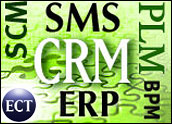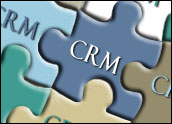
What does marketing resource management mean to you? Does it mean the same thing to your coworker? Your competitor? The vendors who sell these solutions? The acronyms used to define the marketing automation space — MRM, MOM, EMM, DAM, etc. — have undeniably become so ambiguous that it’s not uncommon for one to define another.
With some vendors offering different solutions under the same acronym, it’s time to lift the veil and reveal the benefits of marketing automation technology.
There used to be only two things that were certain in life: death and taxes. Recently, at least in the world of business, a third undeniable truth has crept into our everyday existence: acronyms. Whether it is a byproduct of the fast paced private sector, or simply a result of phrases that lend themselves so wonderfully to abbreviations, the use of acronyms has reached dizzying proportions.
Let’s face it: We in the business world love our acronyms. Even though acronyms were employed to save time, the use of different acronyms to refer to similar marketing automation solutions does little to cut down on conversation time; if anything it is counterproductive. The question becomes then, what happens when the acronyms we rattle off so feverishly come to mean different things?
Acronyms and Marketing Automation
There is no better example of acronym ambiguity than the marketing automation space. For years, the terms marketing resource management (MRM), marketing operations management (MOM), enterprise marketing management (EMM), and digital asset management (DAM) have provided the clay which vendors shape and mold to bring to market whatever set of features they have included in their product(s).
A recent report titled “Success Strategies in Marketing Automation” by Aberdeen Group, a Harte-Hanks Company, suggests that companies that struggle to understand what marketing automation to adopt do so in part because of ambiguity in product offerings and a lack of consistency in the product nomenclature.
Aberdeen surveyed over 200 companies to find out how they are dealing with the increasing pressure placed on marketing departments to demonstrate a return on marketing investments. The Aberdeen research indicated a whopping 67 percent of survey respondents were not sure what features to expect from solutions or technologies sold under the guise of MRM, MOM, EMM or DAM.
The remaining 33 percent showed no consistency in the features they believed each acronym should provide. This uncertainty is compounded by the fact that marketing automation vendors offer the same functionality under different acronyms and product labels. Consequently, it’s difficult for customers to compare the benefits of one solution over another.
Under the Hood
The problem for companies trying to define MRM, MOM or the like stems partly from the realization that marketing automation solutions encompass a variety of technologies and features. Let’s start by understanding what a marketing automation solution should be capable of offering.
A typical marketing automation solution enables organizations to automate and streamline internal/external marketing activities through standardization, collaboration, workflow, budgeting, digital asset management and a host of other features designed to automate and standardize the activities in marketing; much the same way an ERP system helps finance and accounting. Ideally, this automation should lead to more efficient operations, and thus more profitability from the marketing function.
Aberdeen’s research revealed that 51 percent of Laggard organizations have greater than 80 percent manual marketing environments. It’s not uncommon for these marketing departments to leverage Microsoft Office products, like Excel and Word, to manage the day-to-day complexities of marketing activities.
In highly manual marketing departments, documents are commonly distributed for approval and/or editing through e-mail, which decentralizes document access and creates multiple versions of a single document. Now consider the creation of marketing collateral or the distribution of new logos and branding; the same issues prevent the efficient utilization and distribution of materials and approvals among marketing professionals.
Problems are further compounded by globalized communication between divisions, product groups, or regions. Other activities, like budgeting and planning, marketing campaign management and event management, are also managed through spreadsheets, word documents and e-mail. These practices prevent marketing professionals from focusing on the activities that truly matter to the CMO (chief marketing officer): sustainable ROMI (return on marketing investment) and measurable results.
Don’t Waste Time With Acronyms
What technologies are top performing companies using? Companies in search of marketing automation solutions should not waste time trying to define different acronyms (the vendors are doing that), but instead educate themselves on the functionality that will provide the greatest ROI (return on investment). So the question becomes “how do companies approach the search?” and “what specific functionalities must they have?”
A typical marketing automation solution will help automate one or many components in the day-to-day operational aspects of a marketing department. Aberdeen research isolated the features used by top 20 percent of performers in a recent survey on marketing automation.
These organizations predominantly utilized three vital marketing automation features/technologies. Seventy-one percent of Best-in-Class leveraged campaign management. In fact, Best-in-Class were two times more likely than their peers to use campaign management for over three years. Best-in-Class demonstrated widespread adoption of marketing planning and budgeting technologies — two times that of Laggards.
Finally, 52 percent of Best-in-Class leveraged marketing dashboard technology, vs. 22 percent of Laggards. These functionalities help Best-in-Class organizations achieve superior performance in return on marketing investments and budget allocation.
Success in Marketing Automation = Technology + Process
Companies need to leverage more than technology to realize the full potential of marketing automation solutions; they must instill an organizational culture poised to optimize the technology through organizational process and resource commitments.
Aberdeen’s research also concluded that companies exhibiting Best-in-Class characteristics were more than twice as likely as Average companies (62 percent vs. 28 percent) to leverage operational and strategic KPIs (key performance indicators) to improve marketing processes and twice as likely as Laggards (46 percent vs. 22 percent) to tie performance to compensation.
Value in Marketing Automation
Marketing Automation adoption is largely a function of recognizing a measurable benefit from the implementation of such technologies. After all, the internal champion driving the adoption of marketing automation technology must be capable of showing the CEO or the CFO how and when the investment will produce a positive ROI and a positive impact on the bottom line.
Is there value? The research suggests there certainly is. Aberdeen’s report revealed that 58 percent of Best-in-Class companies leverage marketing automation as a key enabler to sustainable superior performance. However, it’s extremely difficult to holistically quantify such value.
The problem with acronym ambiguity in the marketing automation space is it convolutes the buyers’ ability to measure the benefits of one solution over another. Buyers get confused and many stop trying to understand the benefits and continue to suffer through the growing pains that caused them to consider marketing automation in the first place.
Research shows there is value in marketing automation solutions; Best-in-Class companies have been leveraging this value for years. The addition of automation and technology changes the way marketing needs to operate. Best-in-Class organizations recognize this and devote resources to optimizing and reusing best practices in technology and process. For now, it’s wise to ignore the haze that shrouds the vendors’ use of acronyms that define marketing automation technology and seek the technological features and functions your marketing department needs to blossom into a Best-in-Class performing organization.
The Aberdeen report, “Success Strategies in Marketing Automation,” is available for free on the Aberdeen Web site.
Ian Michiels is a senior research analyst at the Aberdeen Group. Michiels covers customer intelligence and marketing management under the sales and marketing practice. His current research agenda is focuses on demand generation, closed-loop marketing, CRM, and marketing automation. He can be reached at [email protected].























































